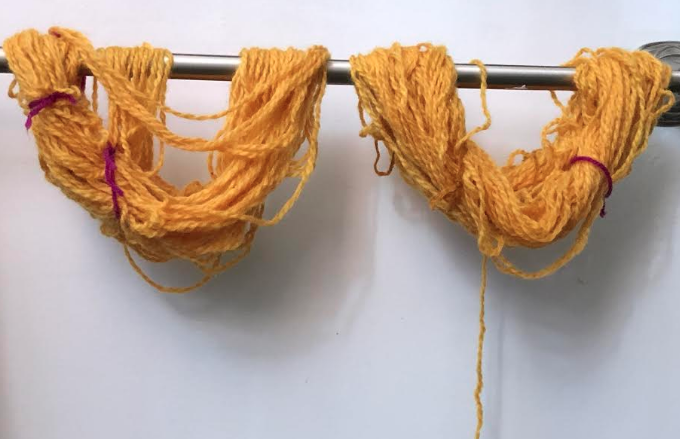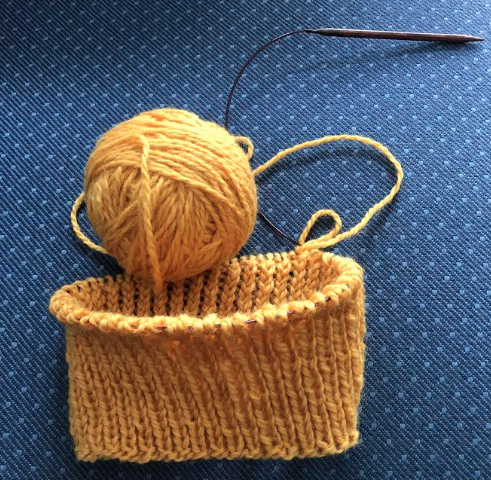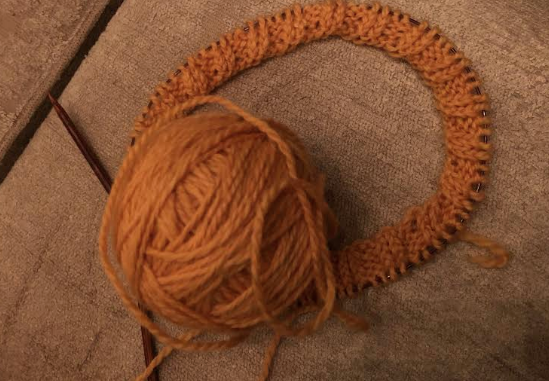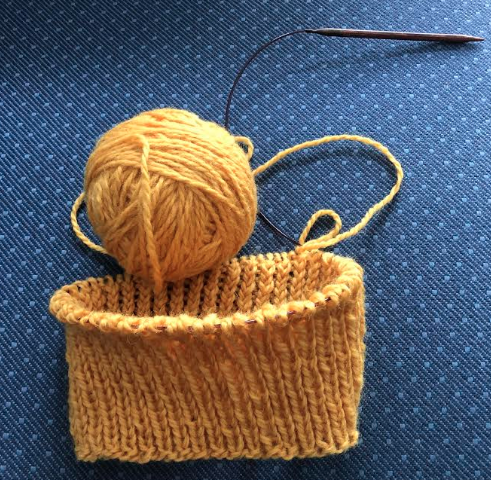I’ve been saving onion skins for about 3 months. It amounted to about 3 pounds of onion skins! This could have taken way more time if onions weren’t a staple ingredient in my cooking.
Why was I saving onion skins? Well, to start with, they dry out and don’t spoil so easily, so it is easy. They are also high in vitamin A and can be added to stocks or a pot of steaming rice or barley to add a bit of extra flavor. That is ultimately not why I was saving onion skins, though. I was saving onion skins to use as a natural dye for 100% wool yarn!
This could be a really fun activity to do with yourself, those you live with, even children. It is both artistic and science-y, and has the added bonus of using kitchen scraps that you’d normally either add to the compost or throw away. Before the synthetic dyes that color most of our clothes today, natural dyes used to be normal. The colors of our clothes used to come from plants, insects, and minerals. Onion skins are one of these!

There are many different variables involved in natural dye, and because of that, it turns out a bit different every time. Some of these variables include pH, level of chlorine in your water, how colorful the onion skins are (are they vibrant or pale?), and what mordant you choose, or additive used to help bind the dye to the fiber. I personally use alum mordant because it is kitchen safe…the same kind that you might add to your pickles to make them extra crispy, or even add to your garden as a fertilizer. You can also use tannins, iron, cream of tartar, and/or soy milk as a mordant to bind the dye to the fiber, and use baking soda to change the pH and thereby change the color. Animal fibers hold natural dyes the best, often the most colorfast, which means they absorb the most vibrant colors and are least likely to fade. Next, plant fibers hold natural dye the second best. Colors tend to be a bit less vibrant because they are not able to absorb as much of the dye. Synthetic fibers almost never soak in much dye or color, so if you try this at home, be sure to use wool, cotton linen, or silk.

To get started, you can save the skins of red onions or yellow onions, or both! I saved mostly yellow onions, so the color that resulted from the dye bath went from a strong bronzy orange to a yellow gold. I saved them in a plastic container with an open top so they could dry out. Closing them into an airtight container will encourage moisture accumulation that will likely mold or spoil the onion skins. Another way to store them is in a paper bag.
You must prepare the fiber (the material you are dyeing) before mordanting, and you must mordant before dyeing. To prepare the fiber for mordant, soak the fiber in warm water for one hour. To make the mordant, mix alum powder into water. I will link some recipes later on in the blog post with the exact measurements. Once mixed, bring the mordant to a simmer. Once the fiber is soaked through in the warm water, transfer it over to the mordant and let it simmer for one hour. While the mordant and fiber are simmering together, you can start the dye pot! Add the onion skins to a big pot of water and let get to a low boil. After the onion skins have been on the stove for an hour, check the color of the dye by dipping a bit of paper towel, white cloth, or white spoon into the onion skin dye pot. If you like where the color is at, transfer the fiber from the mordant pot to the onion skin dye pot. Let simmer in the onion dye pot for 1 hour, and then check to see where the color is. If you want a light, gentle color, you can take out the fiber and wash gently with lukewarm water and lay out to dry. If you want a deeper color, I suggest leaving the fiber in the onion dye pot overnight and taking it out to wash and dry in the morning. That is what I did with the 100% wool yarn I dyed with onion skins. Please check out the results below:

Please check out these onion skin recipes with more exact measurements here:
How to Dye Fabric With Onion Skins

I hope you give nature dyes a try! There is a whole natural dyeing world out there to explore.

